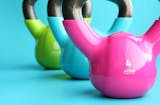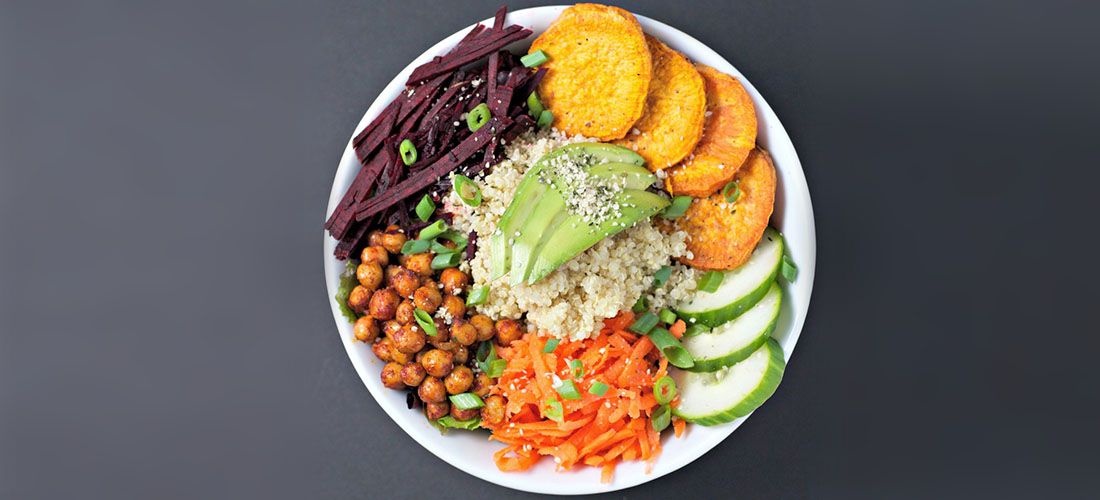A perfect platter with all the nutrients[1] neatly dressed. Hola! What else could have been better than that? We as a foodie yearn to have the most balanced and vital diet in our meal. But taking care of all the vitamins and minerals is a tough job.
To make your choice easier better and yummy, we bring you 15 awesome nutritional guidelines to keep your platter happy!
Contents
VARIETY IS KEY
Eat a variety of nutrient-rich foods. You need more than 40 different nutrients for good health[2], and no single food supplies them all. Your daily food selection should include wholegrain products (wholegrain cereals, brown rice, wholemeal bread etc), fruits and vegetables, dairy products. and meat. poultry, fish and other protein foods.
BALANCE YOUR PLATE
Nutritionists used to suggest that meals should be one-third each of carb, protein and veg[3], but the most recent advice is that your plate should be half full of vegetables,a quarter carbs and a quarter protein. Make sure you balance every meal to ensure a health intake.
BULK UP ON PROTEIN
Meals containing higher levels of protein and a lower amount of carbohydrate keep you fuller for longer[4] than those that are low in protein and high in carbohydrates. Try altering the balance of foods on your plate to help maintain fullness,particularly at lunchtime.
AGE-RELATED ALTERATIONS
Remember that as you grow older your calorie requirements will change[5] even if you maintain the same level of activity. Make time to think about your life eating balance a few times a year to see if you need to alter your intake
GROWING-UP DIETS
Teenagers and older children who are growing fast often have higher requirements for nutrients. For example 15 to 18 year old boys need more vitamin[6],calcium,phosphorus and iron than adult men.
similarly girls have the same scenario.
CALORIE COUNT
For an adult man who is moderately active the daily guidelines are around 2500 a day. For women who usually have less muscle bulk and therefore a lower metabolism,it’s 2000 a day. Dropping 500 calories a day is a calorie-controlled diet.
SPOT THE DIFFERENCE
The main point of difference between US and EU/UK nutritional labels is that the EU/UK requires nutrients to be shown per 100 gm or 100 ml.
The nutrient amount may, in addition, be given per quantified serving or portion.
BOOST THEIR BRAINS
For children aged between for and six, growth has slowed down but general development is ongoing and rapid, so getting enough calories is really important. studies have shown that children with healthy diets perform better in school[7],so aim to give boys of this age 1700 and girls 1500 calories a day.
GOLDEN OLDIES
Scientists have found that consuming a diet rich in wholegrain foods may lower the risk for cardiovascular disease[8] and reduce the onset of metabolic syndrome, especially in older people so its even more important to eat them as you age.
ALLOW FOR DIFFERENCES
Remember that US recommended daily allownces (RDAs) differ from UK RDAs , therefore figures and statements of percentage contribution of nutrients could be misleading on important products. Check where your products originated to be sure.
COUNT KIDS CALORIES
Aged between seven and ten, children need around 2000 calories for a boy and 1800 for a girl to keep their body functioning optimally. Eleven to 14 year old boys need an average of 2200 calories a day and girls 1900, but bear in mind that these amounts are calculated for average activity, so if your child is sporty, he/she will probably need more.
THUMBS UP TO CHEESE
Did you know that a portion size of cheese is just the size of a thumb? Or that one muffin or bagel portion is the size of a ping-pong ball? This means you’re more than likely getting more than one portion with each serving, so take this into account before planning menus.
TODDLERS DON’T RUN ON EMPTY
If son lime children aged one to three, try to make sure they get around 1200 calories a day from all the major food groups to meet their growth and energy needs. Try to keep down the anionot of “empty” calories – in processed foods – and to include as many different foods as possible.
TEEN SPIRIT
The recommended daily amount of calories for a teenager over 14 years old is actually around 300 calories a day higher than that for an adult because their body is using up lots of calories in growth and development. Aim for around 2800 calories for boys and 2200 for girls and avoid skipping meals.
CLIMB THE FOOD PYRAMID
Many organisations use the food pyramid to help you understand how to eat better. At the base of the plan are plroty of breads, cereals, rice and pasta, vegetables and fruits. add 2 3 servings a day from dairy and 2-3 servings from meat. and go easy on fats, oils and sweets, which are at the top of the pyramid.
So make your food a blissful one. Every piece of nutritional food you gulp makes you better. Want to know how to make un-tasty food tastier? Have a look at these mouth watering ways to make your vegetables tasty!
References: [1] J Am Coll Nutr. Interrelationships of food, nutrition, diet and health: the National Association of State Universities and Land Grant Colleges White Paper. 1996 Oct;15(5):422-33. [2] Jamison DT, Breman JG, Measham AR. Disease Control Priorities in Developing Countries. 2nd edition. Washington (DC): 2006. [3] Robert P Heaney and Donald K Layman. Amount and type of protein influences bone health. 2008 American Society for Clinical Nutrition. [4] Barkeling B, Rössner S, Björvell H. Effects of a high-protein meal (meat) and a high-carbohydrate meal (vegetarian) on satiety measured by automated computerized monitoring of subsequent food intake, motivation to eat and food preferences. Int J Obes. 1990 Sep;14(9):743-51. [5] Jennie L Wells and Andrea C Dumbrell. Nutrition and Aging: Assessment and Treatment of Compromised Nutritional Status in Frail Elderly Patients. Clin Interv Aging. 2006 March; 1(1): 67–79. Published online 2006 March. [6] Ross AC, Taylor CL, Yaktine AL. Dietary Reference Intakes for Calcium and Vitamin D. Washington (DC): National Academies Press (US); 2011. [7] Florence MD, Asbridge M, Veugelers PJ. Diet quality and academic performance. J Sch Health. 2008 Apr;78(4):209-15; quiz 239-41. doi: 10.1111/j.1746-1561.2008.00288.x. [8] Carol Johnston. Functional Foods as Modifiers of Cardiovascular Disease. Published in final edited form as: Am J Lifestyle Med. 2009 July; 3(1 Suppl): 39S–43S. doi: 10.1177/1559827609332320






Comments are off this post!